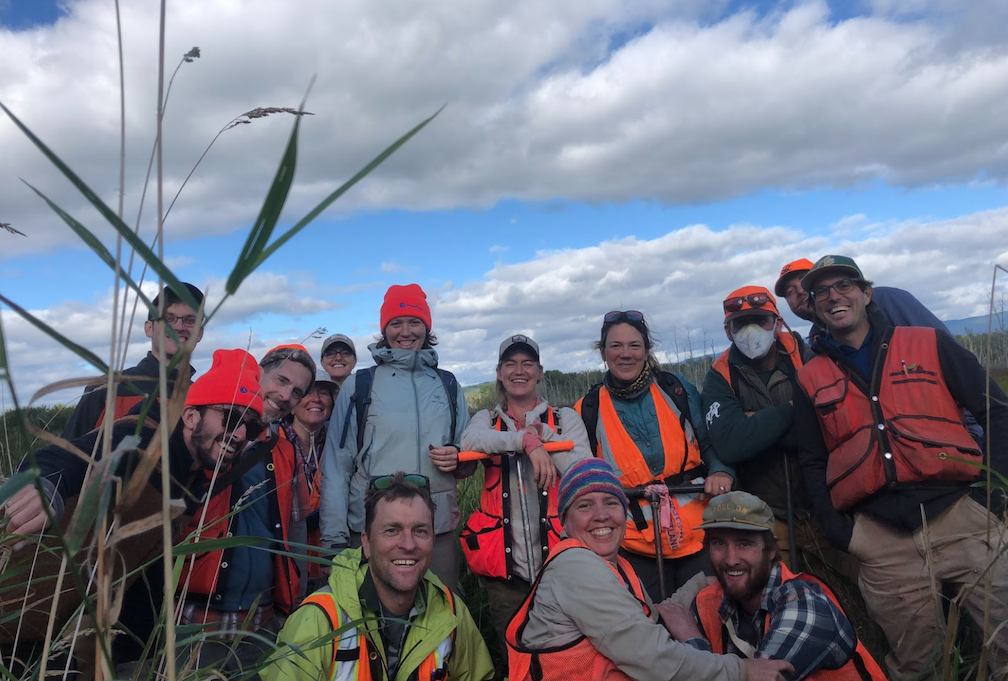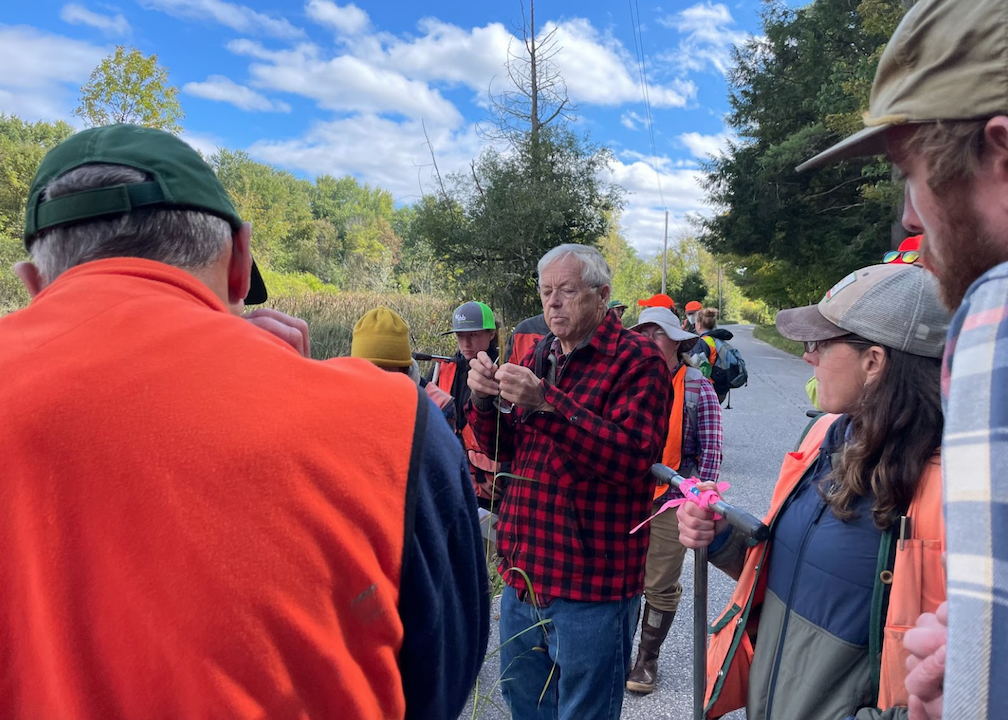VNRC is proud to celebrate the success of the inaugural Vermont Association of Wetland Science (VAWS) workshop that was held within the wetland floodplains of Otter Creek last Friday, September 23, 2022. VAWS is a new association whose mission is to “foster understanding and collaboration across multidisciplinary professions by providing wetland training, education, and networking for members and the general public, encouraging the use of science-based wetland management and policy, promoting wetland research and the protection and restoration of wetlands and associated aquatic resources, and responding to future wetland challenges and opportunities in the State.” VAWS is open to anyone with an interest in learning more about wetland science.

Mary Perchlik – VNRC’s Eco AmeriCorps Member – summarizes her perspective on the workshop:
“The Vermont Association of Wetland Science (VAWS) timed their first workshop perfectly at the wetland restoration site along the Otter Creek, which was swollen from rain storms, and windy from a far-away hurricane. As autumn rains like these fall, the benefits of wetlands in terms of flood control, water quality, and groundwater recharge can be clearly seen in the environment. As workshop presenters and participants walked into the restored corn and hay fields, we saw eagles and ospreys circling the dead stand of trees, showcasing some of the diverse wildlife that utilize these natural wetlands.”
A wetland can be identified using three criteria: hydrology, plant life, and soil type, and the schedule for the workshop loosely followed this criteria. The first presentation consisted of a tour of the restored wetland area by Ryan Crehan from the US Fish and Wildlife Service, who showed how the natural hydrology of the wetland had been restored by reestablishing the historic topography of the landscape and by plugging or filling ditches that had drained the wetland. The beavers had participated too, building a dam which created a large pond, creating a stand of upright dead trees which are important habitat for wildlife that is difficult to recreate.
The second presentation, led by Art Gilman, a botanist with Gilman and Briggs, tackled the identification of fall grasses. Gilman brought examples of the grass species most commonly found, and led us on a walk to identify them in the field. Grass can be a tricky part of restoring a wetland, often one of the first plants to take hold in a site, as tall grass can choke out trees, preventing forests from reestablishing. The trees that had regrown naturally had grown very thickly to outcompete the grass. The trees planted by people were more spaced out—if they can survive long enough to grow above the grass line, they are likely to be successful.

For the third presentation, we took our soil augers out to different points in the wetland. Bill Forbes of the Mettowee Conservation District showed us how soil can vary within a wetland, and the effect of water on wetland soil. The final soil dig consisted of soaking wet, gray, clay, where the first sample we took was a deep brown mixed with red clusters of decomposed organic matter. Each soil sample told a different story from that location—the soil in a reclaimed ditch had stratifications, showing each layer of sediment dropped from flood waters, whereas the soil close to the beaver pond was so wet, it would immediately start shrinking from someone just standing on it.
Wetland restoration is a crucial pillar in our work to protect Vermont’s water. Functional wetlands provide habitat, help remove nutrients from water, control flooding, slow water speeds and erosion, and provide beautiful recreational resources in communities. That’s why VNRC proudly supports the Vermont Association of Wetland Scientists.
More about VAWS! If you’re interested in offering assistance with forming a nonprofit, organizing membership, and planning workshops, please contact Karina Dailey, at kdailey@vnrc.org or Mary Beth Poli at poli@ottercrk.com.




